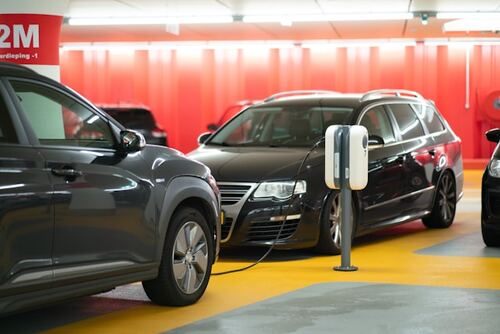The Crucial Role of Electric Vehicles
Electric vehicles have emerged as a forefront solution in tackling the pressing challenge of climate change. Positioned as a cleaner, greener alternative, they are instrumental in the global drive to reduce carbon emissions from the transportation sector. Unlike conventional internal combustion vehicles that rely on fossil fuels and emit detrimental pollutants, EVs operate on electricity, yielding no tailpipe emissions. This transition is about cutting down on pollution and envisioning a future with quieter, more efficient urban environments and improved public health.
The promise of EVs aligns with the pursuit of innovation in automotive technology and ongoing efforts to foster environmental responsibility.
Advancements Driving Adoption
Significant technological advancements have been pivotal in enhancing EVs’ appeal to the general public. Battery technology, in particular, has seen profound improvements. Furthermore, the growing interest in alternative options, such as exploring trucks for sale in York, ties into broader discussions around sustainability. Not only can modern batteries store more energy, thereby increasing the vehicle’s range, but they also charge faster, reducing the inconvenience that earlier EV models presented. These improvements make EVs more suitable for everyday use, eventually leading to greater public interest and acceptance.
Policy frameworks that support these vehicles play just as crucial a role. Many governments worldwide are offering incentives such as subsidies, tax breaks, and other economic benefits to encourage consumers to switch to electricity. A surge in EV sales reported by Inside Climate News exemplifies how effectively these combined factors drive the growth of electric vehicle markets globally.
Addressing Infrastructure Challenges
Despite the enthusiasm around EVs, challenges still need to be addressed, particularly concerning infrastructure. Charging infrastructure is an essential component for successfully integrating EVs into the mainstream. Range anxiety, a term used to describe drivers’ fear of vehicles running out of charge on the road, is a significant barrier to widespread adoption. Addressing this issue requires a concerted effort to expand charging stations’ availability in urban and rural areas. As the logistics industry adapts to more sustainable solutions, choosing an eco-friendly Spedition service can help reduce emissions while ensuring efficient transportation of goods.
Efforts are underway worldwide to alleviate these concerns. Municipal governments, private corporations, and utility providers collaborate to develop robust networks of fast and reliable charging stations. The vision is to make charging as seamless and accessible as refueling at a gas station, thus encouraging a smooth adoption curve for electric vehicles.
Making EVs Affordable and Accessible
The affordability and accessibility of electric vehicles are critical metrics that determine their adoption rate. While technological advancements have improved performance, the initial cost of purchasing an EV can still be a roadblock for many potential buyers. This dynamic changes as economies of scale are achieved in the production processes, thus lowering costs. Government interventions, such as grants and lower tariffs, assist in aligning these costs with consumer expectations, making EVs a more attractive choice.
Accessibility extends beyond financial considerations. There’s also a need for widespread public awareness and knowledge dissemination about the benefits of EVs. Efforts to democratize electric vehicle ownership and ensure they reach a more varied demographic are essential. This requires comprehensive strategies, including educational campaigns, community programs, and partnerships between automotive manufacturers and public sectors.
The Synergy of EVs and Renewable Energy
Electric vehicles’ promise is magnified when they are powered by renewable energy sources, making them almost entirely carbon-neutral. Traditional electricity sources can still emit greenhouse gases. Still, by integrating renewables such as solar, wind, or hydroelectric power into the grid, the cycle of EV usage becomes significantly more sustainable. Charging stations powered by renewables ensure that the environmental benefits of EVs are fully realized, from the electricity generation stage to the actual operation on the road.
As noted by the World Energy Council, this synergy provides a comprehensive solution to vehicular emissions and puts the power of change directly in the consumer’s hands.
Public and Private Sector Collaboration
The journey to integrating electric vehicles into everyday life underscores the importance of collaboration between the public and private sectors. Governments provide the regulatory framework and incentives to nurture the EV sector, while private companies drive innovation and commercialization. This partnership can fast-track infrastructure projects like establishing charging networks or developing more efficient battery technologies.
Such cooperative ventures foster an environment where the best ideas can be tested and scaled, thus rapidly progressing sustainability goals and technological advancement in the transport sector.
Worldwide Trends and Local Impacts
The global push towards electric vehicles influences local policies and consumer behaviors worldwide. Countries are enacting ambitious plans to phase out fossil-fuel cars and mandating increased electric vehicle quotas. This sector’s development reflected urban air pollution, decreased operational costs for vehicle owners, and substantial energy savings.
At a local level, cities are engaging in robust planning and adapting their infrastructures to accommodate EVs. Urban centers are restructuring to promote more sustainable mobility options, encouraging residents to switch to greener transportation methods. This creates a ripple effect, where initiatives such as installing solar-powered charging hubs or introducing electric buses make a tangible difference in local sustainability efforts.
In conclusion, the integration of electric vehicles is more than a shift in consumer preference; it marks a transformative movement towards a sustainable future where environmental consciousness, technological capability, and community engagement converge.




